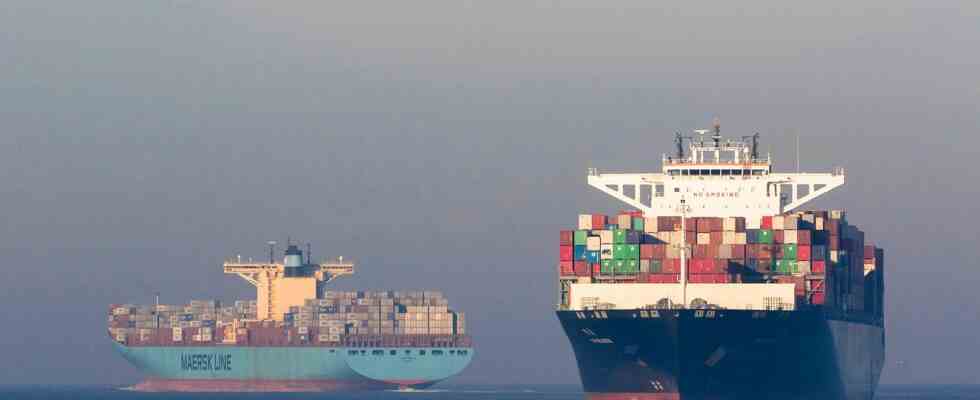Status: 06.09.2022 4:19 p.m
The congestion of container ships in front of important ports is disrupting supply chains worldwide. Researchers currently consider the German Bight to be a particular bottleneck. Almost twenty freighters are waiting there to be processed.
According to experts, the line of container ships that cannot be handled in the German Bight is getting longer. Based on observations by the Kiel Institute for Economic Research (IfW). In the German Bight, 19 container ships are currently waiting for their goods to be unloaded, two more than two weeks ago. For the first time, the researchers assessed the traffic jam in the North Sea as the “most serious” in the world.
Eleven percent of goods stuck in traffic
According to IfW calculations, around eleven percent of all goods shipped worldwide are currently stuck in traffic jams at important container ports. “The traffic jams in container shipping are getting stuck at a high level,” writes IfW economist Vincent Stamer in a recent study. This means that two percent of global freight capacity is idle.
Queues are also getting longer in front of the US states of South Carolina and Georgia. There is the important container port of Savannah. According to the information, 16 percent fewer goods are currently being shipped in the Red Sea, the most important maritime trade route between Europe and Asia, than would be expected under normal circumstances. On the other hand, the traffic jams in front of China’s ports are “declining due to cyclical reasons,” says Stamer.
Since the outbreak of the corona pandemic two and a half years ago, experts have seen global container handling “out of step”. Disruptions such as the lockdowns in China or labor disputes in Great Britain keep preventing container shipping from returning to normal. However, since around 90 percent of global goods traffic is transported by ship, its importance for world trade and the global economy is immense.
Trade is growing slightly, Germany is lagging behind
The freight rates – i.e. the prices for transport – remain correspondingly high and make trade in goods more expensive. Although freight rates in sea trade from Asia to northern Europe have fallen since the beginning of the year, “the traffic jams are preventing a return to pre-pandemic levels,” according to the study.
While global trade is likely to grow by 1.2 percent month-on-month despite the container jams in August, a decline is currently expected for Germany. According to current estimates, imports will fall by 0.2 percent, and exports are likely to fall by 0.7 percent. Demand from Germany’s two most important trading partners, the USA and China, has fallen.

